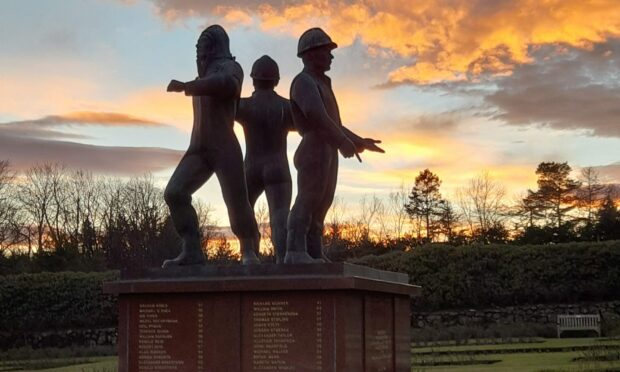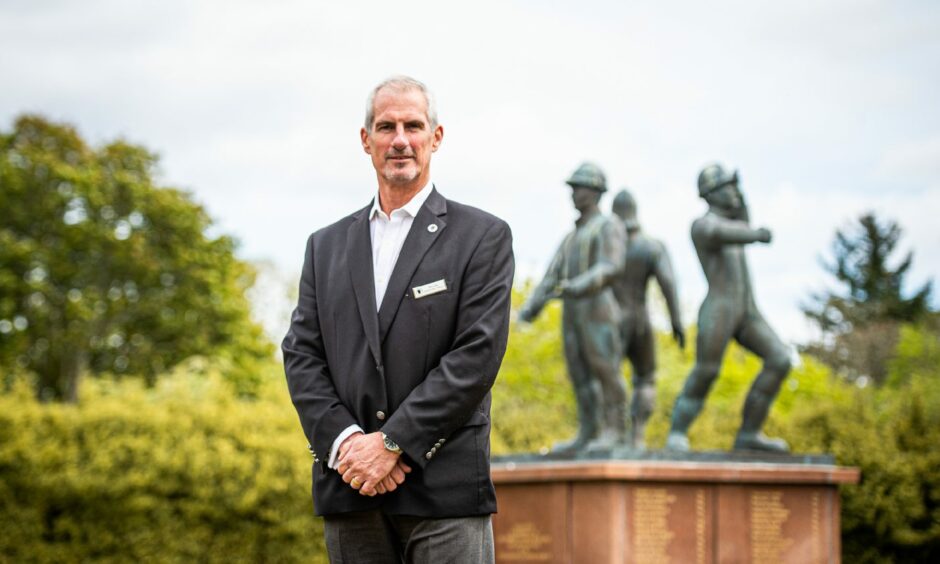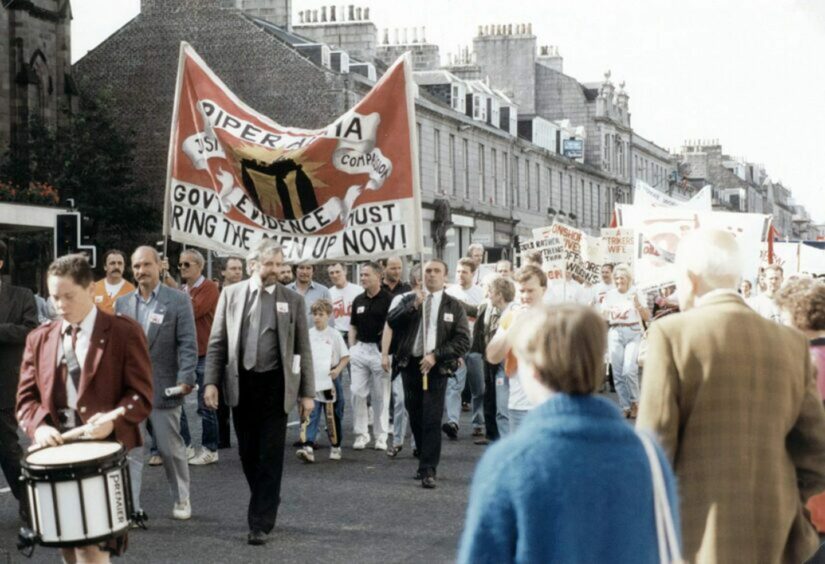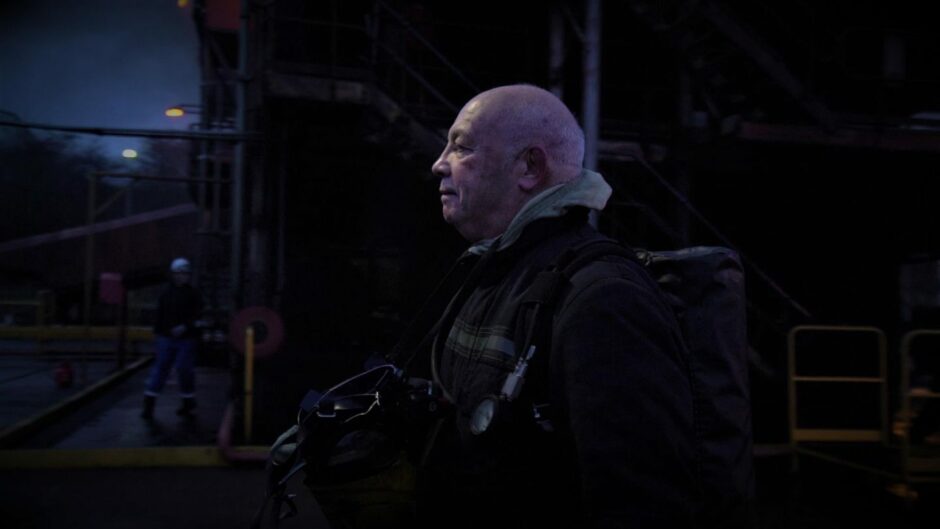“You can tell that people are still impacted by what happened on the 6th July 1988”, says Piper Alpha survivor Steve Rae.
Today marks 34 years since the tragedy, which remains the worst disaster in the history of the offshore oil and gas sector.
Mr Rae, one of just 61 survivors, and chairman of the Pound for Piper Trust, underlines that the anniversary provides a chance to support families of those lost and those who came home.
“It is an opportunity for us to refresh people around the events of that night but more importantly, it’s actually to give a place for folk to gather that have suffered from the same tragedy and still suffer from grief some 34 years on”
Explaining that the Pound for Piper trust isn’t expecting a large turnout at the memorial gardens in Hazlehead Park, the trust’s chairman adds that “those who come annually are appreciative of it, just to talk privately.
“That for me is a key part of it and it shouldn’t just be about big anniversaries it should be on an annual basis because it is an opportunity to reflect.”
Piper Alpha’s impact on Aberdeen
Mr Rae reflects on his time in the fallout of the disaster and how the grief hit different people across the city of Aberdeen differently: “The thing that strikes me the most still to this day is how grief is still obvious on certain days of the year, like the 6th July, but also when you talk to people. If they know I’m a survivor or I was involved in the 6th July, they will relate to that, share their feeling around it – you can tell that people are still impacted by what happened on the 6th July 1988.
“In particular for those that lost loved ones, those who had just been married, those who had just had children, and those that had been close to retirement age, it meant different things to different people but I think grief still exists and we have to provide a facility for people to grieve collectively or singularly. That’s what the gardens do, it’s still a place of solace, it’s still a place that people visit frequently and I think that’s what comes to mind. As chairman of the trust we will hold a service every year because we think it provides that facility to those that are still in need.”
This was a very solemn city for a very long time”
In 1988 Aberdeen was seeing the benefits of the oil and gas industry. Many people across the city were employed in the sector and North Sea oil and gas was becoming a fundamental part of the Aberdonian lifestyle. The Piper Alpha survivor speaks about how widespread the oil and gas industry was in the Granite City and, subsequently, how widespread the grief was.
“There was not one family in this area and extended area to the suburbs that did not have a relative or a member of family or a close friend that worked in the oil and gas industry.
“If you think of the magnitude of the loss that night and then multiply that by the connections and the families and so on and so forth – it was clearly obvious from the get-go that Aberdeen and Aberdeenshire would be immensely affected.
“This was a very solemn city for a very long time. If you go back and think about the attendance at some of those memorial services, and there wasn’t just one or two. I recall my employer had one – we lost 26 employees that night and so we had a memorial service at Queens Cross church and it was capacity. That was one of many.
“Having attended many of the services and funerals for those that were lost, there wasn’t a day or a service that wasn’t at capacity, and that spoke volumes about how effected Aberdeen and Aberdeenshire was.
“That has continued because children grow up, grandchildren come around and they talk about their grandads, they talk about their fathers that they never met and it stays here.
“That’s a very powerful and very long-lasting trait that will continue, and I think that’s why it’s affecting Aberdeen and it will continue to affect Aberdeen for the coming years”
Piper Alpha survivors
Only 61 people survived the fire that consumed the rig on the 6th of July 1988. Of the 167 people that died in Piper Alpha, 30 bodies were never found.
Steve now talks about his experience. Recently he was a keynote speaker at Offshore Energy UK’s (OEUK) Health Safety and Environment (HSE) conference. At that event, he spoke about the importance of sharing personal stories.
He explains that it took time for him to be ready to talk publicly about what happed that day.
“I didn’t deliberately go about sharing my story for the first 10 years after Piper,” he said.
“Continuing to work in this industry as I did was a pretty tough thing to do because you have that whole guilt syndrome.
“You think that people look at you differently and you don’t want to expose yourself to anything other than just getting on with your life.”
When the Pound for Piper chairman started talking about his experience surviving the disaster he noticed how it impacted his audience.
“I realised that the larger my audience, the broader the influence on how people thought about safety and how they went about their business. That’s how I came to talking, as I still do, at HSE conferences and safety leadership things.”
Steve is not the only survivor who has opened up about their experience on July 6 1988. Joe Meanen is another person who survived the disaster and now talks publicly about it.
It was Mr Rae that advised his fellow Piper Alpha survivor to start public speaking.
“I think it’s been cathartic, it’s been part of his healing process and I remember when he first started to think about talking, he was extremely anxious because he didn’t know how it would be received.
“Hopefully, I encouraged him to talk about it openly and I watched him in his first couple of talks and I thought, ‘he’s so authentic and you can see he’s emotionally touched by it’, as I am still when I do it. It was good for Joe, I don’t think it would be good for everyone.”
When asked what advice he would give to anyone thinking about speaking about their experience, he responded: “This is not something that is broad brush that you can take anywhere. When I talked to the HSE conference, I can see in the room that it affects people differently – you have to be very mindful of that, the message you’re landing and how impactful it can be.
“So I would encourage you to think about it, but I don’t think it’s for everybody.”
The Piper Alpha anniversary memorial service will be held in Hazlehead Park at 1pm today.



